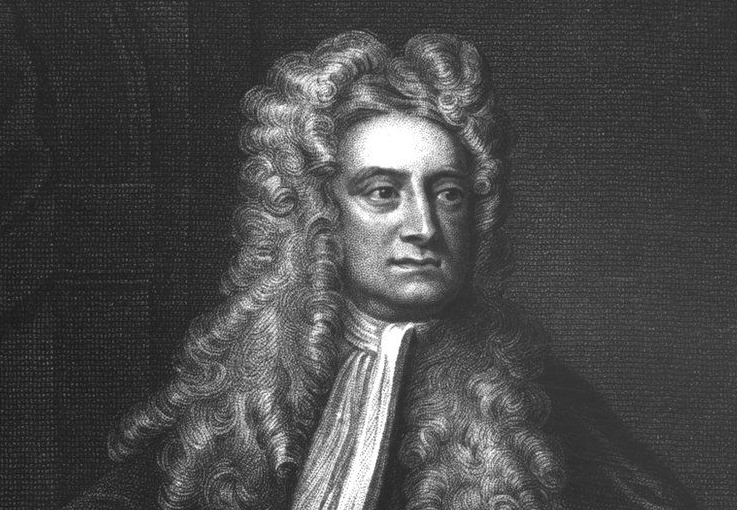Eunice Newton Foote: Pioneering Scientist and Champion of Women’s Rights
In the mid-19th century, Eunice Newton Foote, an exceptional American scientist and passionate advocate for women’s rights, revolutionized the field of climate research with her groundbreaking discoveries.1
Her profound experiments focused on the warming effects of specific gases, establishing the very foundation of our current understanding of the greenhouse effect and its correlation to climate change.
Unbeknownst to many, Foote’s invaluable contributions remained unjustly overshadowed until recent years, a stark reminder of the systemic erasure of women’s achievements within the realm of STEM (Science, Technology, Engineering, and Mathematics) disciplines.
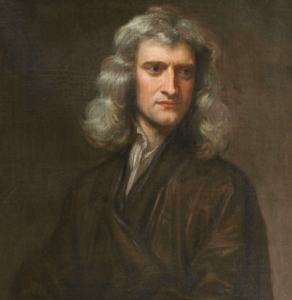
Table of Contents
Unveiling the Life of Eunice Newton Foote
Eunice Newton Foote was born into a world brimming with potential on an undisclosed date in the 19th century. Though details regarding her upbringing are scarce, it is evident that her passion for knowledge and inquiry began to flourish from a young age.2
View this post on Instagram
Foote’s insatiable curiosity led her to pursue an education that would serve as the gateway to her remarkable scientific journey.
Scientific Endeavors and the Greenhouse Effect
Foote’s thirst for scientific exploration knew no bounds. In her pioneering experiments, she meticulously examined the effects of various gases on our planet’s temperature. It was through these extensive studies that Foote made a groundbreaking discovery—the remarkable link between certain gases and the greenhouse effect.
With meticulous precision and unwavering dedication, Foote conducted experiments that shed light on how specific gases, such as carbon dioxide, could trap heat within the Earth’s atmosphere, ultimately leading to increased global temperatures.
Her findings paved the way for our current understanding of climate change and the urgent need for environmental conservation.
Regrettably, despite the profound impact of her research, Foote faced the distressing reality of having her work largely overlooked during her lifetime. The historical dismissal of women’s contributions in the male-dominated scientific community marginalized Foote and countless other brilliant minds.
Also Read: Is Pat Casey Dead Or Still Alive? BMX Rider Death News Update
Exploring the Legacy of Sir Isaac Newton
Sir Isaac Newton, an eminent figure in the fields of physics and mathematics, left an indelible mark on scientific knowledge. Through his groundbreaking discoveries, he revolutionized our understanding of the natural world.3
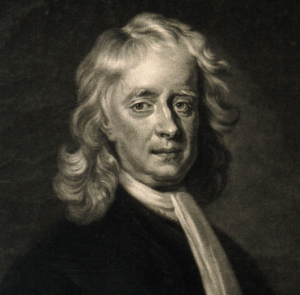
Newton’s contributions encompassed various disciplines, including physics, mathematics, and astronomy. His laws of motion, gravitational theory, and development of calculus stand as pillars of modern science.
Eunice Newton Foote’s Path in Climate Science
In a different era, Eunice Newton Foote made her own significant contributions to scientific knowledge, particularly in the realm of climate science. Foote’s work focused on studying the Earth’s relationship with the broader universe from a climate science perspective.
While she shares the same surname as Sir Isaac Newton, Foote’s research and interests diverged from those of the renowned physicist and mathematician.
The Distinction of Eunice Newton Foote
Born nearly a century after Sir Isaac Newton’s passing, Eunice Newton Foote pursued her passion for understanding the Earth’s climate and its interconnectedness with the universe. Her research aimed to shed light on the mechanisms and factors that influence climate patterns.4
Foote conducted experiments to investigate the effects of different gases, including carbon dioxide, on the Earth’s temperature. Her pioneering work in this area laid the foundation for further exploration of climate science.
What Happened to Eunice?
Eunice Newton Foote, a notable figure in scientific history, breathed her last in September 1888, precisely on either the 29th or 30th of that month, in Lenox, Massachusetts.
Born on July 17, 1819, Eunice Foote departed this world at the age of 69. Though the cause of her demise remains unknown, it is worth noting that her age slightly exceeded the average life expectancy for American women during the late 1800s.
From Amateur Scientist to Pioneering Discoveries
Throughout her career, Eunice Foote was regarded as an amateur scientist. However, a century after her passing, her contributions to the study of climate change began to gain well-deserved recognition.
The Foote family, including Eunice’s relatives, has consistently demonstrated a remarkable aptitude for scientific pursuits. The New York Times highlights the story of Liz Foote, a scientist presently pursuing a PhD in environmental studies.
Liz Foote, when interviewed for their Overlooked feature, expressed immense pride in being connected to Eunice Newton Foote through their family lineage. She exclaimed, “It is an absolute honor to have someone like Eunice in our family tree. I am delighted that her remarkable story is gaining more attention.”
Also Read: Where Is Sophy Ridge Heading After Departuring Sky News? What Happened To The Jounalist On Sunday?
Isaac Newton: The Revolutionary English Physicist and Mathematician
Isaac Newton, also known as Sir Isaac Newton, was a renowned English physicist and mathematician who played a pivotal role in the Scientific Revolution of the 17th century.
Born on December 25, 1642 (January 4, 1643, New Style) in Woolsthorpe, Lincolnshire, England, Newton’s contributions to the fields of optics and mathematics have left an indelible mark on the scientific community. This article explores his remarkable discoveries and enduring legacy.
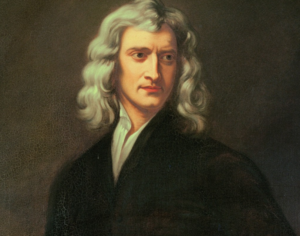
Unveiling the Composition of White Light: Newton’s Optics Revolution
One of Newton’s most groundbreaking achievements was his revelation regarding the composition of white light. Through meticulous experimentation and observation, he unraveled the mysteries of color and successfully integrated the various phenomena into the scientific realm of light. This momentous discovery served as the bedrock for the development of modern physical optics.
Newton’s Exploration of Colors and Light
Newton’s comprehensive exploration of colors and light proved instrumental in furthering our understanding of the natural world. By conducting experiments with prisms and examining the dispersion of light, he demonstrated that white light is composed of a spectrum of colors.
#bitcheslovethemane pic.twitter.com/I0iGO7LGVN
— Sir Isaac Newton (@NewtonParody) April 8, 2014
This breakthrough shattered existing notions and established a new framework for comprehending the nature of light.
The Revolutionary Nature of Newton’s Prism Experiment
In his revolutionary prism experiment, Newton passed a beam of sunlight through a glass prism, causing the light to refract and disperse into its constituent colors. This phenomenon, known as chromatic dispersion, revealed the full spectrum of visible light.
By meticulously measuring the angles of refraction, Newton deduced that different colors bend at varying angles, providing crucial insights into the behavior of light.
Revolutionizing Science: The Life and Legacy of Sir Isaac Newton
In the world of scientific discovery, Sir Isaac Newton stands as an eminent figure whose contributions continue to shape our understanding of the universe. Born on December 25, 1642, in England, Newton possessed a remarkable intellect that spanned multiple disciplines.
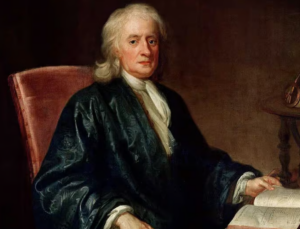
As a mathematician, physicist, astronomer, alchemist, theologian, and author, he exemplified the term “natural philosopher,” a title bestowed upon him during his era.
Newton’s groundbreaking work during the Scientific Revolution and the subsequent Enlightenment era solidified his place in history. In this article, we delve into the life, achievements, and lasting legacy of this extraordinary individual.
Early Life and Education
Born in the quaint town of Woolsthorpe-by-Colsterworth, Lincolnshire, Newton’s journey towards scientific greatness began in humble surroundings. His inquisitive nature and thirst for knowledge manifested at an early age, foreshadowing his future brilliance.
Newton’s formal education commenced at The King’s School in Grantham, where his aptitude for mathematics and physics became apparent.
The Principia Mathematica: Unveiling the Laws of Motion
Newton’s most renowned publication, “Philosophiæ Naturalis Principia Mathematica,” revolutionized the field of science and laid the foundation for classical mechanics.
Originally published in 1687, this monumental work amalgamated various scientific findings, propelling the understanding of the laws governing motion, force, and gravity. By introducing his three laws of motion, Newton presented a unified framework that explained celestial and terrestrial phenomena.
Isaac Newton Inventions
Isaac Newton, a brilliant scientist and mathematician, left an indelible mark on the world with his remarkable inventions and groundbreaking theories.
The Reflecting Telescope: A Triumph of Ingenuity
In 1668, Newton achieved a significant scientific milestone by designing and constructing a revolutionary reflecting telescope. This groundbreaking invention propelled him into the scientific spotlight, showcasing his unparalleled ingenuity and unwavering dedication to unraveling the mysteries of the universe.
As a professor at Cambridge, Newton was obligated to deliver an annual series of lectures, and it was during this time that he chose to embark on the study of optics.
Unveiling the Secrets of Light and Color
Drawing upon the capabilities of his newly crafted telescope, Newton meticulously observed and analyzed various optical phenomena. His tireless efforts led him to develop a comprehensive theory on light and color, cementing his position as one of the foremost authorities in the field.
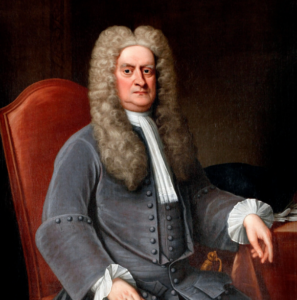
By conducting experiments and meticulously documenting his findings, Newton aimed to shed light on the nature of light itself.
The Royal Society’s Fascination and Newton’s Publication
In 1671, the Royal Society, recognizing the potential of Newton’s reflecting telescope, eagerly requested a demonstration. Their curiosity and enthusiasm served as a catalyst for Newton to publish his extensive notes on light, optics, and color in 1672.
This monumental publication, known as Newton’s Opticks: Or, A Treatise of the Reflections, Refractions, Inflections and Colours of Light, solidified his pioneering work and offered a comprehensive understanding of these fundamental principles.
Newton’s inventions and contributions not only revolutionized the scientific community but also paved the way for future discoveries and advancements. His reflecting telescope, an innovative marvel, laid the foundation for astronomical observations and continues to shape our understanding of the cosmos.
Moreover, his investigations into optics and his groundbreaking theory on light and color formed the bedrock for subsequent studies in the field.
FAQ’S
Q1: Were Eunice Newton Foote and Isaac Newton related?
No, Eunice Newton Foote and Isaac Newton were not related. Despite sharing the same surname, there is no known familial connection between the two.
Q2: Who was Eunice Newton Foote?
Eunice Newton Foote was an American scientist and women’s rights advocate. She was born on July 17, 1819, in Goshen, Connecticut. Foote is best known for her pioneering work on the effects of carbon dioxide on the Earth’s atmosphere, which she presented in a scientific paper in 1856. Her research on greenhouse gases laid the foundation for our understanding of climate change.
Q3: Who was Isaac Newton?
Isaac Newton was an English physicist, mathematician, and astronomer. He was born on December 25, 1642, in Woolsthorpe, Lincolnshire, England. Newton is widely regarded as one of the most influential scientists in history. His groundbreaking work in physics, including his laws of motion and theory of universal gravitation, revolutionized our understanding of the physical world.
Q4: Did Eunice Newton Foote and Isaac Newton live in the same era?
No, Eunice Newton Foote and Isaac Newton did not live in the same era. Eunice Newton Foote was active in the mid-19th century, particularly in the 1850s and 1860s. Isaac Newton, on the other hand, lived during the 17th and early 18th centuries. He made significant contributions to science and mathematics in the late 17th century.
Q5: What is the significance of Eunice Newton Foote’s work?
Eunice Newton Foote’s work holds great significance in the field of climate science. In her 1856 paper titled “Circumstances affecting the heat of the sun’s rays,” Foote conducted experiments to demonstrate the relationship between the presence of carbon dioxide in the atmosphere and its ability to trap heat. Her findings suggested that increased carbon dioxide levels could lead to a rise in global temperatures, foreshadowing the concept of human-induced climate change.
Read More: What was Emily Morgan Sexuality? Was the ITV News Journalist Lesbian?
